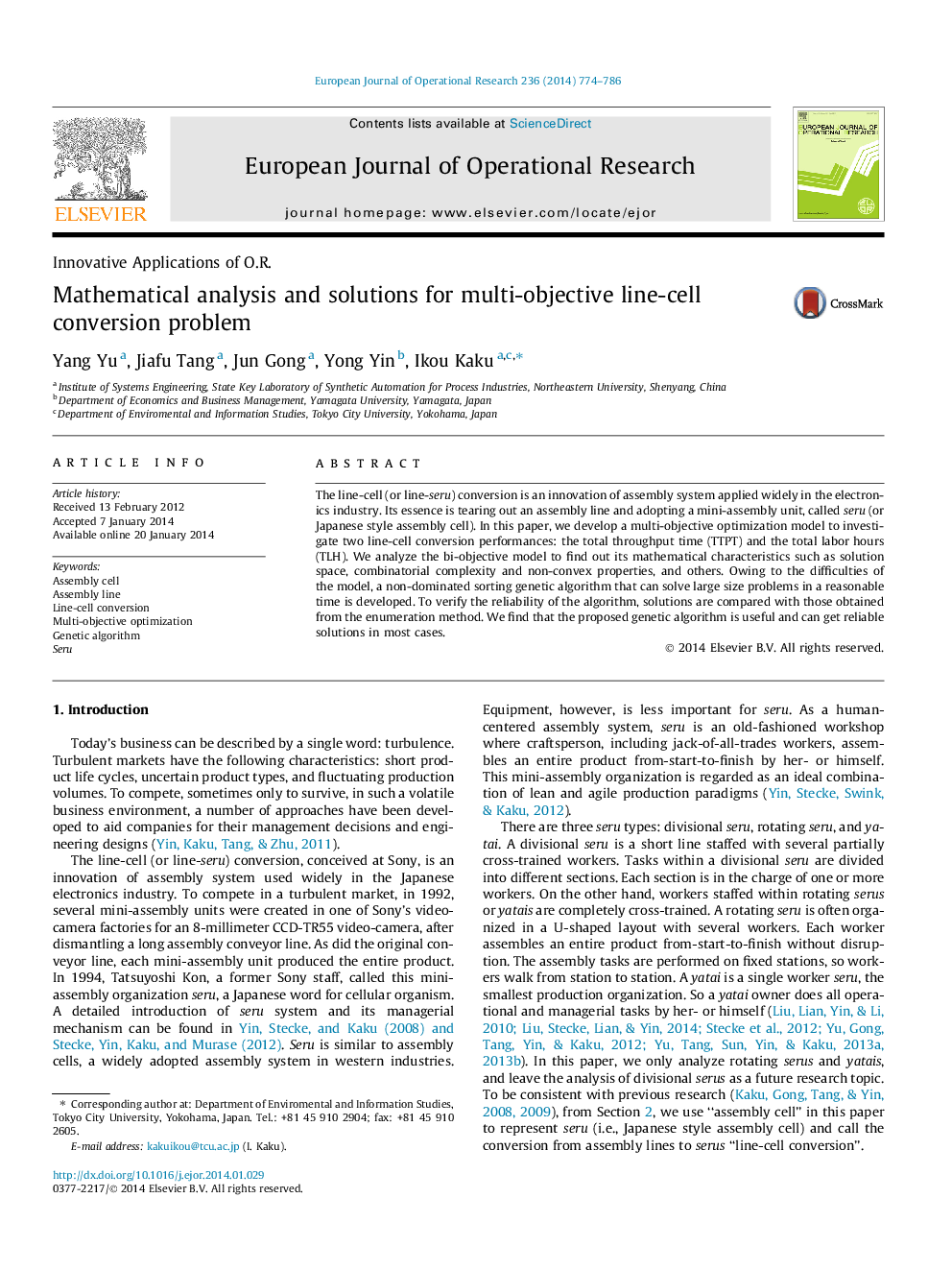| Article ID | Journal | Published Year | Pages | File Type |
|---|---|---|---|---|
| 6897477 | European Journal of Operational Research | 2014 | 13 Pages |
Abstract
The line-cell (or line-seru) conversion is an innovation of assembly system applied widely in the electronics industry. Its essence is tearing out an assembly line and adopting a mini-assembly unit, called seru (or Japanese style assembly cell). In this paper, we develop a multi-objective optimization model to investigate two line-cell conversion performances: the total throughput time (TTPT) and the total labor hours (TLH). We analyze the bi-objective model to find out its mathematical characteristics such as solution space, combinatorial complexity and non-convex properties, and others. Owing to the difficulties of the model, a non-dominated sorting genetic algorithm that can solve large size problems in a reasonable time is developed. To verify the reliability of the algorithm, solutions are compared with those obtained from the enumeration method. We find that the proposed genetic algorithm is useful and can get reliable solutions in most cases.
Related Topics
Physical Sciences and Engineering
Computer Science
Computer Science (General)
Authors
Yang Yu, Jiafu Tang, Jun Gong, Yong Yin, Ikou Kaku,
